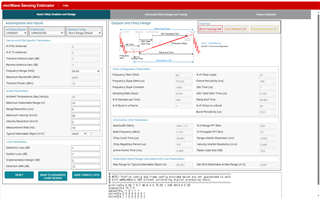I use mmWave Demo Visualizer for my evaluations.
It is understood that the Range Profile shows the data processed by 1DFFT after AD conversion.Let me ask you a few questions about 1DFFT.
1)I assume that the chirp is always transmitted(excluding Idle Time), but when is the 1DFFT process carried out?
2)How can the time taken for a 1DFFT process be calculated for the following settings?

3)What does "# of Range FFT Bins" stand for?
4)The mmWave Demo Visualizer user guide states that around 10 fps is appropriate. Does this mean that changes of less than 100 ms cannot be detected?
Best Regards,

